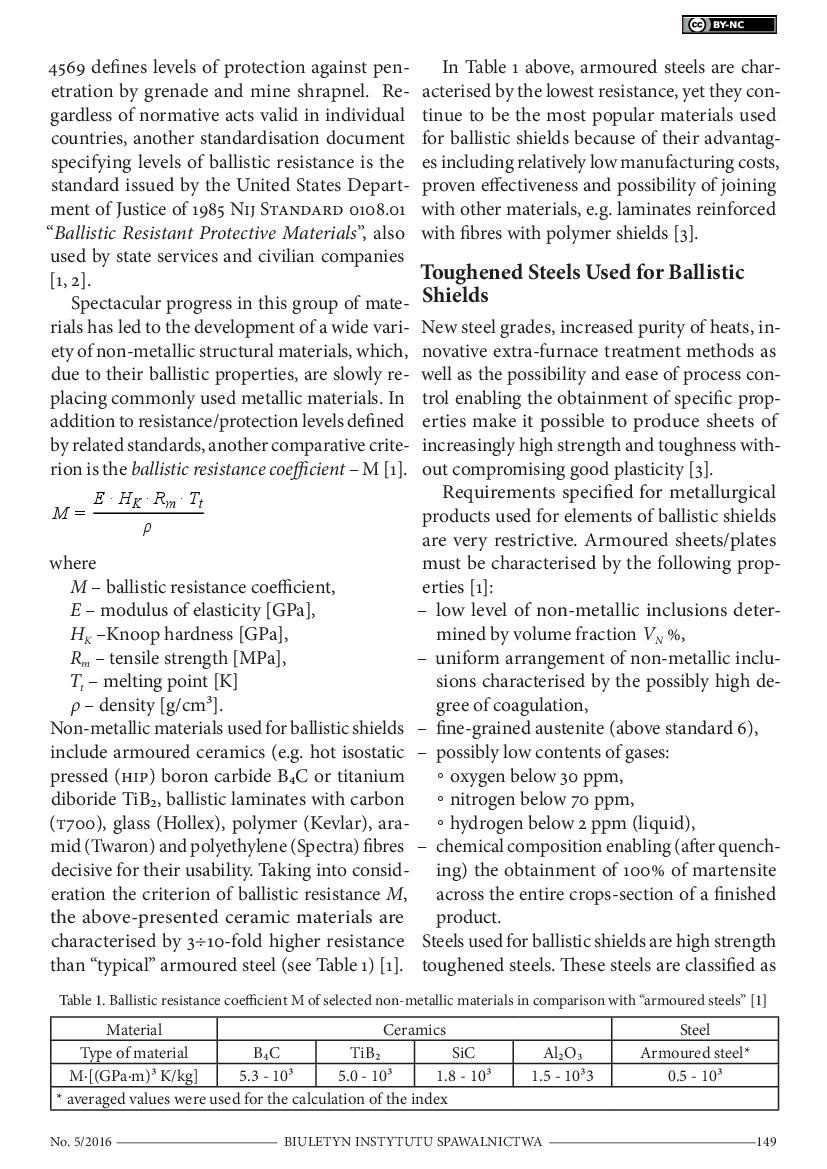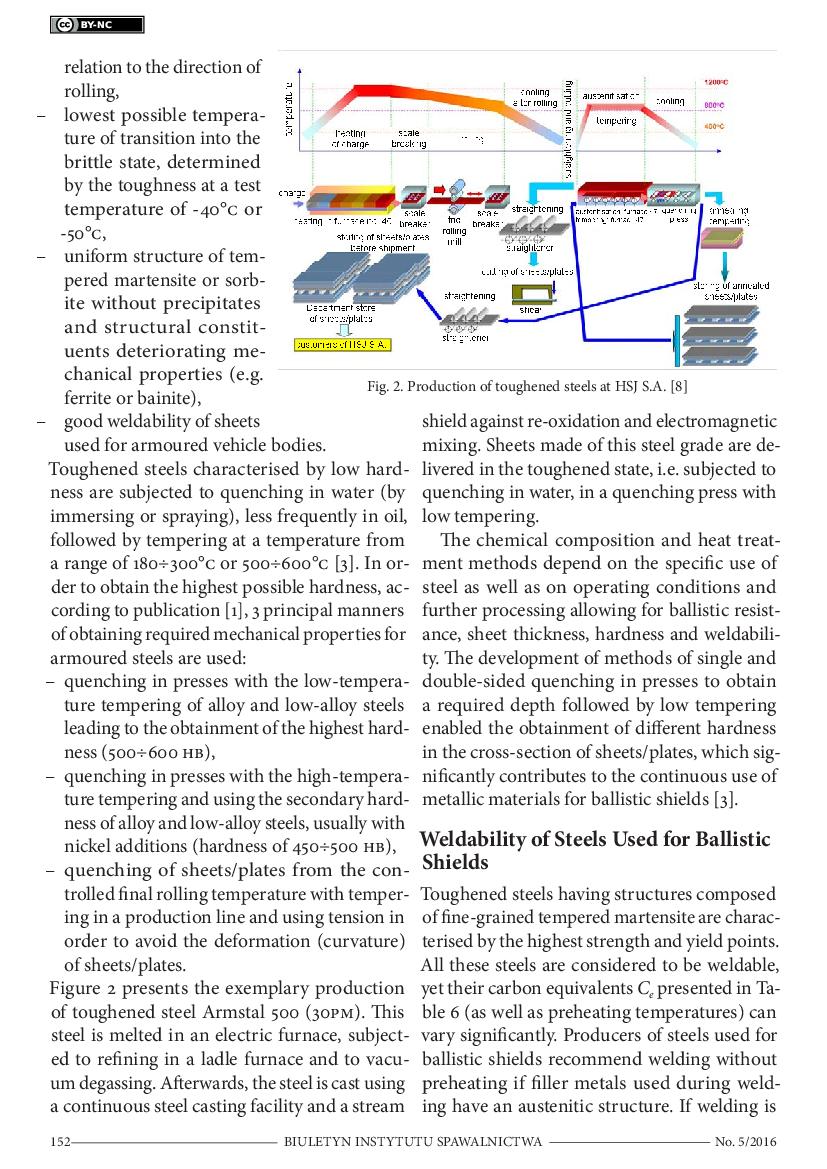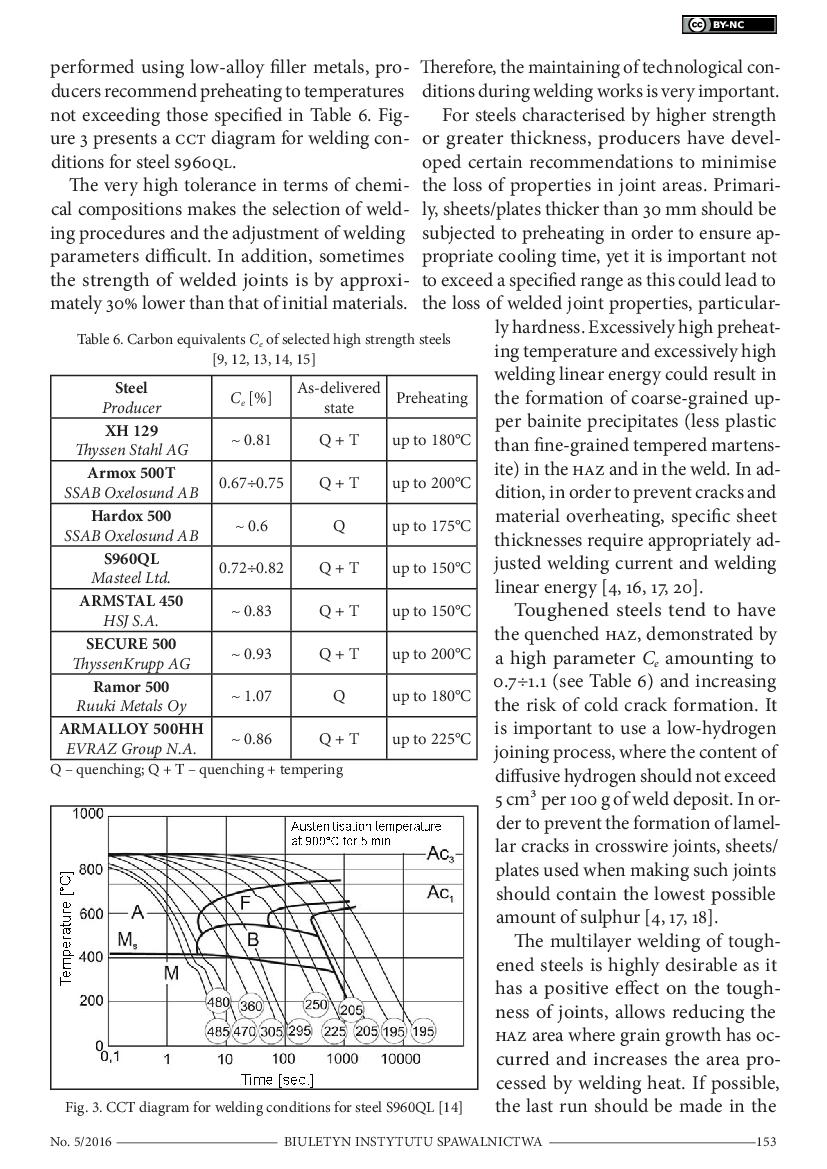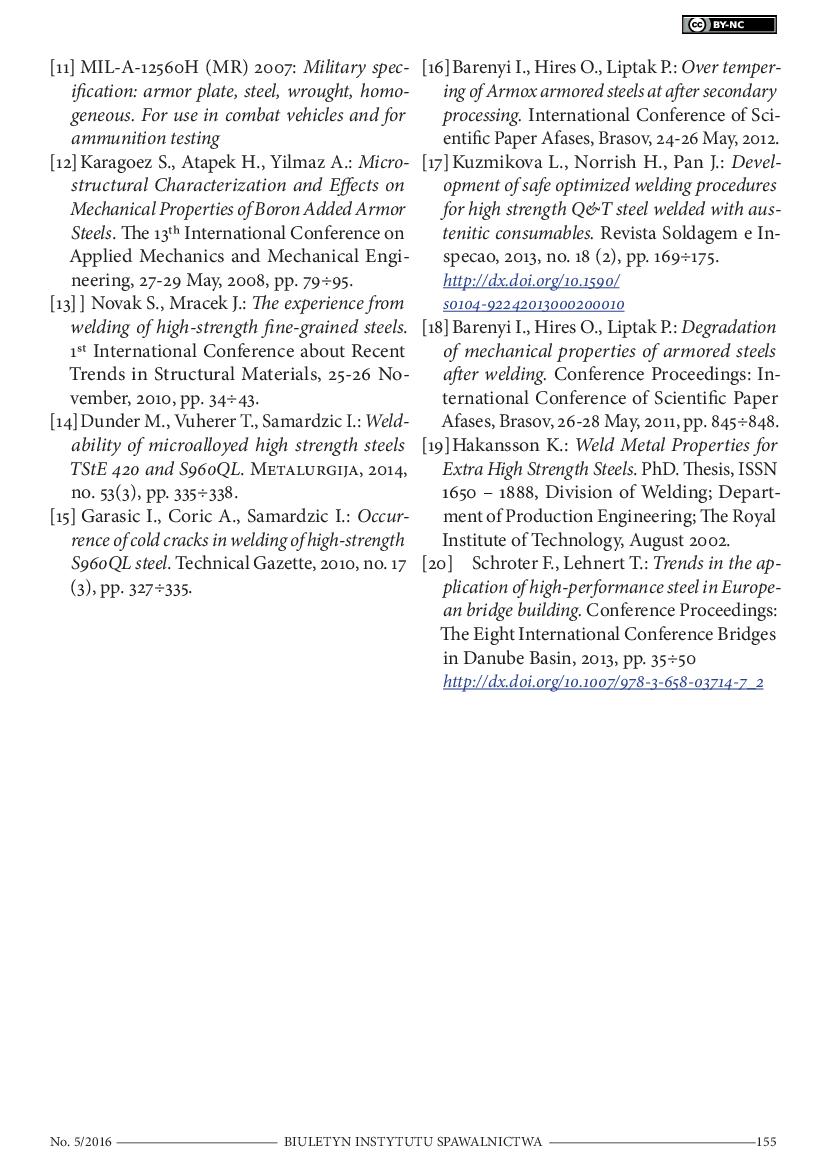Characteristics and Weldability of Toughened Steels Used for Ballistic Shields
The article characterises selected toughened steels used in the production of ballistic shields, presents standard requirements in terms of the properties and chemical composition of these steels as well as enumerates and discusses guidance on the welding of such steels. The article also presents the results concerning the comparison of the carbon equivalents (Ce) of selected steels used for ballistic shields and preheating temperatures suggested by steel producers. The analysis of collected information revealed that the above named steels should be welded using low-hydrogen processes ensuring the obtainment of a diffusive hydrogen content below 5 cm3 per 100 g of the weld deposit. It was also ascertained that sheets having thicknesses above 30 mm should be subjected to preheating and that interpass temperature should not exceed 200°C. In addition, it was determined that welding should be performed using multiple runs and austenitic high-alloy filler metals, preferably G 18 8 Mn and that gas mixture-shielded welding processes should be performed using argon-based mixtures; preferably 82% Ar + 18% CO2 or 92% Ar + 8% CO2.
 1 / 8
1 / 8
 2 & 3 / 8
2 & 3 / 8
 4 & 5 / 8
4 & 5 / 8
 6 & 7 / 8
6 & 7 / 8 8 / 8
8 / 8








